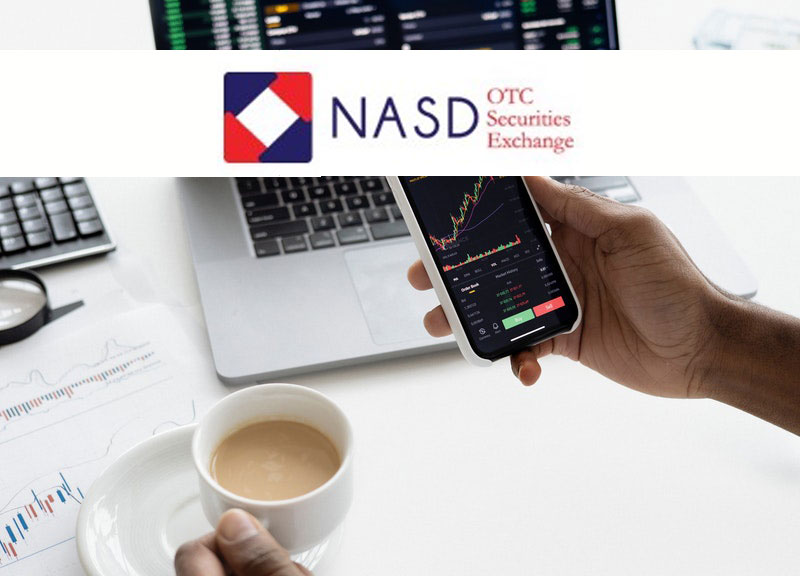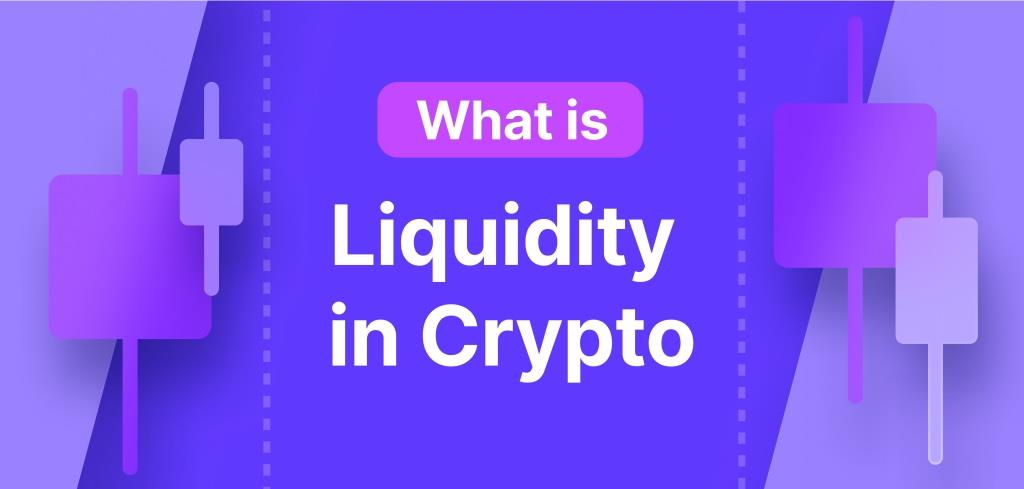Economy
Staking as a Passive Trading Strategy: Unlocking Steady Crypto Earnings

Introduction
In the world of cryptocurrency, staking has emerged as one of the most popular and accessible ways for investors to earn passive income. Unlike traditional trading, where the value of assets can fluctuate wildly in a single day, staking provides a more stable and predictable form of income. Staking involves holding a specific cryptocurrency in a wallet to support the operations of a blockchain network. In return, participants earn rewards in the form of additional cryptocurrency. As the crypto market evolves, staking has gained traction as a low-effort, passive trading strategy, appealing to both new and seasoned investors.
In this article, we will delve into staking as a passive trading strategy, exploring how it works, its benefits and drawbacks, and the various considerations for investors. With the potential for steady earnings and portfolio diversification, staking offers a unique avenue for those looking to optimize their crypto holdings.
What is Staking?
H2: Understanding the Basics of Staking
Staking is the process of participating in a blockchain network by holding a certain amount of cryptocurrency to support network operations. Stakers contribute to securing the network, validating transactions, and in some cases, creating new blocks. In proof-of-stake (PoS) and delegated proof-of-stake (DPoS) systems, staking replaces the energy-intensive mining process seen in proof-of-work (PoW) blockchains like Bitcoin.
By staking their assets, users help maintain the stability of the network while earning rewards as compensation. The amount of cryptocurrency staked often determines the level of influence or participation in the network’s validation process.
H3: How Staking Rewards Are Calculated
The rewards for staking depend on several factors, including:
- Amount Staked: The more you stake, the higher your potential rewards.
- Network Inflation: Some blockchains inflate their supply to distribute staking rewards.
- Duration of Stake: Certain networks offer higher rewards for longer staking periods.
- Overall Network Staking Ratio: If a large portion of the network’s currency is staked, individual rewards may be lower.
Benefits of Staking as a Passive Trading Strategy
H2: Advantages of Staking
Staking provides a variety of benefits for investors looking to earn passive income. Here are some of the primary advantages:
- Consistent Passive Income: Unlike volatile trading, staking provides a steady source of income, with rewards paid periodically.
- Eco-Friendly: Staking is energy-efficient compared to mining in PoW systems, which require extensive energy usage.
- Support for Blockchain Networks: By staking, investors play a role in securing the network, thereby contributing to the stability and decentralization of the blockchain ecosystem.
- Low Entry Barrier: Staking does not require advanced technical knowledge or expensive equipment, making it accessible to most crypto holders.
H3: Portfolio Diversification
Staking allows investors to diversify their portfolio by adding different staking assets, spreading risk across various projects. This approach can reduce volatility and create a more balanced investment strategy.
Risks and Challenges of Staking
H2: Drawbacks of Staking
While staking has numerous benefits, it is not without its challenges. Below are some of the key risks associated with staking:
Market Volatility: Although staking rewards may seem stable, the underlying asset’s value can fluctuate, impacting the actual return on investment.
Lock-Up Periods: Some blockchains require stakers to lock up their assets for a set period, during which they cannot access or trade their funds.
Slashing Penalties: Certain networks impose penalties, known as slashing, for validator misbehavior. Stakers may lose a portion of their staked assets if the validator fails to comply with network rules.
Inflationary Pressures: Some networks distribute staking rewards by inflating their supply, which could dilute the value of the token over time.
H3: Lack of Liquidity
Staked assets may lack liquidity, especially during lock-up periods. If the market takes a downturn, stakers might be unable to sell their holdings quickly, resulting in potential losses.
Different Staking Methods
H2: Popular Staking Methods for Investors
There are various ways to participate in staking, each with its pros and cons. Below are a few popular methods:
- Direct Staking: Investors stake their assets directly on a blockchain network by becoming validators.
- Delegated Staking: Investors delegate their tokens to a validator node. The validator takes care of technical requirements while the investor receives a portion of the rewards.
- Staking Pools: Staking pools allow users to combine their resources to maximize rewards. Pooling can help smaller investors earn rewards even if they don’t meet the minimum staking requirements.
Key Considerations for Staking
H2: Factors to Evaluate Before Staking
Before diving into staking, investors should carefully consider the following:
- Staking Yields: Evaluate the reward rate offered and compare it with potential inflation on the network.
- Staking Period: Be mindful of the lock-up period and whether the network offers flexible options for early withdrawal.
- Reputation of Validators: When choosing a validator, consider their reputation, fee structure, and history of slashing events.
- Platform Security: Ensure that the platform or wallet used for staking has strong security measures to prevent unauthorized access.
H3: Tools and Resources for Effective Staking
Platforms like Nearest Edge offer tools and insights to optimize staking strategies, providing traders with the necessary data to make informed staking decisions.
Staking Case Studies
Many investors have found success through staking, particularly during market upswings. For example, Ethereum 2.0 staking has attracted significant interest as it prepares to transition from PoW to PoS, offering attractive returns for ETH holders who choose to stake.
Another example is Cardano (ADA), which has gained popularity due to its unique approach to staking and user-friendly wallet options. Both Ethereum and Cardano highlight the advantages of staking for long-term investors focused on capital appreciation and passive income.
FAQ Section
H2: Frequently Asked Questions (FAQ) on Staking
H3: 1. What is staking in crypto? Staking is the process of holding crypto in a wallet to support a blockchain network and earn rewards.
H3: 2. How much can I earn through staking? Earnings vary based on factors like the amount staked, duration, and network inflation. Yields generally range between 4% and 20% annually.
H3: 3. Are there risks involved in staking? Yes, risks include market volatility, slashing penalties, lock-up periods, and liquidity constraints.
H3: 4. Do I need technical knowledge to stake? No, many staking platforms make it easy for beginners. Delegated staking and staking pools are especially user-friendly.
H3: 5. Is staking the same as mining? No, staking is a different consensus mechanism. Mining requires significant energy use, while staking does not.
H3: 6. What is a lock-up period? Some networks require staked funds to be locked for a specified time, limiting access during this period.
H3: 7. Can I stake multiple cryptocurrencies? Yes, depending on the network and platform, you can stake various cryptocurrencies simultaneously.
H3: 8. What are staking rewards based on? Rewards depend on the network’s design, including the staked amount, duration, and market conditions.
H3: 9. Are staking rewards taxed? Yes, staking rewards may be subject to taxation. Consult with a tax professional for guidance.
H3: 10. What are the best tools for staking? Platforms like Nearest Edge offer tools to track staking returns and monitor market trends.
Conclusion
Staking is a highly effective passive income strategy in the crypto space, offering a consistent way to earn returns without constant monitoring. With several options, including direct staking, delegated staking, and staking pools, investors can choose a method that fits their risk tolerance and financial goals. However, it’s crucial to understand the potential risks involved, such as market volatility, liquidity issues, and slashing penalties.
As the DeFi ecosystem expands, staking will likely continue to grow in popularity, providing both novice and experienced traders with a valuable income-generating tool. Whether you’re seeking a low-maintenance strategy to grow your crypto portfolio or an eco-friendly alternative to mining, staking presents a compelling option in the crypto market.
Economy
Food Concepts Return NASD OTC Exchange to Danger Zone

By Adedapo Adesanya
Food Concepts Plc neutralized the gains recorded by three securities, returning the NASD Over-the-Counter (OTC) Securities Exchange into the negative territory with a 0.27 per cent loss on Thursday, December 4.
Yesterday, the share price of the parent company of Chicken Republic and PieXpress declined by 34 Kobo to sell at N3.15 per unit compared with the previous day’s N3.49 per unit.
This shrank the market capitalisation of the OTC bourse by N5.72 billion to N2.136 billion from N2.142 trillion and weakened the NASD Unlisted Security Index (NSI) by 9.57 points to 3,571.53 points from 3,581.10 points.
Business Post reports that Central Securities Clearing System (CSCS) Plc went down by 50 Kobo to N38.50 per share from N38.00 per share, FrieslandCampina Wamco Nigeria Plc gained 29 Kobo to sell at N55.79 per unit versus N55.50 per unit, and Geo-Fluids Plc added 5 Kobo to close at N4.60 per share compared with Wednesday’s closing price of N4.55 per share.
Trading data indicated that the volume of securities recorded at the session surged by 6,885.3 per cent to 4.3 million units from the 61,570 units posted a day earlier, the value of securities increased by 10,301.7 per cent to N947.2 million from N3.3 million, and the number of deals went up by 146.7 per cent to 37 deals from the 15 deals achieved in the previous trading session.
At the close of business, Infrastructure Credit Guarantee Company (InfraCredit) Plc was the most traded stock by value on a year-to-date basis with the sale of 5.8 billion units for N16.4 billion, trailed by Okitipupa Plc with 170.4 million units worth N8.0 billion, and Air Liquide Plc with 507.5 million units valued at N4.2 billion.
InfraCredit Plc also finished the session as the most traded stock by volume on a year-to-date basis with 5.8 billion units transacted for N16.4 billion, followed by Industrial and General Insurance (IGI) Plc with 1.2 billion units sold for N420.2 million, and Impresit Bakolori Plc with 536.9 million units traded for N524.9 million.
Economy
Investors Gain N97bn from Local Equity Market

By Dipo Olowookere
The upward trend witnessed at the Nigerian Exchange (NGX) Limited in recent sessions continued on Thursday as it further improved by 0.10 per cent.
This was despite investor sentiment turning bearish after the local equity market ended with 23 price gainers and 28 price gainers, indicating a negative market breadth index.
UAC Nigeria gained 10.00 per cent to finish at N88.00, Morison Industries appreciated by 9.94 per cent to N3.54, Ecobank rose by 8.53 per cent to N36.90, and Coronation Insurance grew by 8.47 per cent to N2.56.
On the flip side, Ellah Lakes depreciated by 10.00 per cent to N13.14, Eunisell Nigeria also shed 10.00 per cent to finish at N72.90, Transcorp Hotels slipped by 9.95 per cent to N157.50, Omatek shrank by 9.23 per cent to N1.18, and Guinea Insurance dipped by 8.46 per cent to N1.19.
Yesterday, the All-Share Index (ASI) went up by 152.28 points to 145,476.15 points from 145,323.87 points and the market capitalisation chalked up N97 billion to finish at N92.726 trillion compared with the previous day’s N92.629 trillion.
Customs Street was bubbling with activities on Thursday, though the trading volume and value slightly went down, according to data.
A total of 1.9 billion stocks worth N19.2 billion exchanged hands in 23,369 deals during the session versus the N2.3 billion valued at N21.0 billion traded in 21,513 deals a day earlier.
This showed that the number of deals increased by 8.63 per cent, the volume of transactions depleted by 17.39 per cent, and the value of trades decreased by 8.57 per cent.
For another trading day, eTranzact led the activity chart with 1.6 billion units sold for N6.4 billion, Fidelity Bank traded 31.0 million units worth N589.3 million, GTCO exchanged 28.3 million units valued at N2.5 billion, Zenith Bank transacted 27.1 million units for N1.6 billion, and Ecobank traded 21.9 million units worth N744.3 million.
Economy
Naira Loses 18 Kobo Against Dollar at Official Market, N5 at Black Market

By Adedapo Adesanya
The Naira marginally depreciated against the United States Dollar in the Nigerian Autonomous Foreign Exchange Market (NAFEM) on Thursday, December 4 amid renewed forex pressure associated with December.
At the official market yesterday, the Nigerian currency lost 0.01 per cent or 18 Kobo against the Dollar to close at N1,447.83/$1 compared with the previous day’s N1,447.65/$1.
It was not a different scenario with the local currency in the same market segment against the Pound Sterling as it further shed N15.43 to sell for N1,930.97/£1 versus Wednesday’s closing price of N1,925.08/£1 and declined against the Euro by 20 Kobo to finish at N1,688.74/€1 compared with the preceding session’s N1,688.54/€1.
Similarly, the Nigerian Naira lost N5 against the greenback in the black market to quote at N1,465/$1 compared with the previous day’s value of N1,460/$1 but closed flat against the Dollar at the GTBank FX counter at N1,453/$1.
Fluctuations in trading range is expected to continue during the festive season as traders expect the Nigerian currency to be stable, supported by intervention s by to the Central Bank of Nigeria (CBN)in the face of steady dollar demand.
Support is also expected in coming weeks as seasonal activities, particularly the stylised “Detty December” festivities, will see inflows that will give the Naira a boost after it depreciated mildly last month, according to a new report.
“As the festive Detty December season intensifies, inbound travel, tourism spending, and diaspora inflows are expected to provide moderate support for FX liquidity,” analysts at the research unit of FMDA said in its latest monthly report for November.
Traders cited by Reuters expect that the Naira will trade within a band of N1,443-N1,450 next week, buoyed by improved FX interventions by the apex bank.
Meanwhile, the crypto market was down as the US Federal Reserve’s preferred inflation gauge, core PCE, likely rose in September—moving in the wrong direction. However, volatility indices show no signs of major turbulence.
If the actual figure matches estimates, it would mark 55 straight months of inflation above the US central bank’s 2 per cent target. The sticky inflation would strengthen the hawkish policymakers, who are in favour of slower rate cuts.
Ripple (XRP) depreciated by 4.5 per cent to $2.08, Solana (SOL) went down by 3.8 per cent to $138.11, Litecoin (LTC) shrank by 3.1 per cent to $83.23, Dogecoin (DOGE) slid by 2.5 per cent to $0.1463, Cardano (ADA) declined by 2.1 per cent to $0.4368, Bitcoin (BTC) fell by 0.9 per cent to $91,975.45, Binance Coin (BNB) crumbled by 0.9 per cent to $899.41, and Ethereum (ETH) dropped by 0.7 per cent to $3,156.44, while the US Dollar Tether (USDT) and the US Dollar Coin (USDC) closed flat at $1.00 apiece.
-

 Feature/OPED6 years ago
Feature/OPED6 years agoDavos was Different this year
-
Travel/Tourism9 years ago
Lagos Seals Western Lodge Hotel In Ikorodu
-

 Showbiz3 years ago
Showbiz3 years agoEstranged Lover Releases Videos of Empress Njamah Bathing
-

 Banking7 years ago
Banking7 years agoSort Codes of GTBank Branches in Nigeria
-

 Economy2 years ago
Economy2 years agoSubsidy Removal: CNG at N130 Per Litre Cheaper Than Petrol—IPMAN
-

 Banking3 years ago
Banking3 years agoFirst Bank Announces Planned Downtime
-

 Banking3 years ago
Banking3 years agoSort Codes of UBA Branches in Nigeria
-

 Sports3 years ago
Sports3 years agoHighest Paid Nigerian Footballer – How Much Do Nigerian Footballers Earn





















